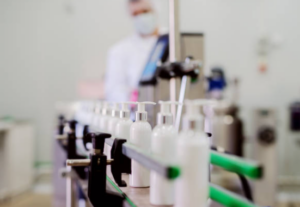Innovation in Health

In recent years, the beauty industry has undergone a remarkable transformation, not only in terms of product innovation but also in ethical practices. As society becomes increasingly conscientious about the welfare of animals and the environment, there’s been a surge in demand for cruelty-free products and sustainable practices. This shift has extended beyond cosmetics and skincare to the realm of medical research and testing. In this blog post, we’ll explore the groundbreaking innovations in health that are paving the way for cruelty-free medical practices and testing, revolutionizing the beauty industry and beyond.
Advancements in Cruelty-Free Medical Research
- Organ-on-a-Chip Technology: Organ-on-a-chip technology represents a groundbreaking approach to modeling human physiology in vitro. These microfluidic devices replicate the structure and function of human organs, allowing researchers to study diseases and test potential treatments without the need for animal experimentation. Each chip contains living cells arranged in a three-dimensional configuration that mimics the microenvironment of the target organ, enabling researchers to observe how drugs and compounds interact with human tissues in real-time. Organ-on-a-chip systems have been developed for various organs, including the liver, heart, lung, and kidney, offering a more accurate and ethical alternative to traditional animal models.
- In Silico Modeling and Simulation: In silico modeling and simulation involve the use of computer algorithms and mathematical models to predict the behavior of biological systems. By inputting data on molecular structures, physiological parameters, and drug interactions, researchers can simulate complex biological processes and predict the safety and efficacy of drugs and cosmetic ingredients. This approach reduces the reliance on animal testing and accelerates the drug discovery process by enabling researchers to prioritize promising candidates for further evaluation. In silico methods are continually evolving, with advancements in machine learning and artificial intelligence enhancing the predictive power of these models and enabling personalized medicine approaches.
- Stem Cell Research and Regenerative Medicine: Stem cell research holds tremendous promise for advancing cruelty-free medical research and therapy development. By harnessing the regenerative potential of stem cells, researchers can generate human tissues and organs in the laboratory for disease modeling, drug screening, and transplantation purposes. Induced pluripotent stem cells (iPSCs), derived from adult cells such as skin or blood, can be reprogrammed to differentiate into various cell types, offering a virtually limitless supply of human cells for experimentation. Additionally, advances in gene editing technologies, such as CRISPR-Cas9, enable precise modifications to the genome of stem cells, facilitating the study of genetic diseases and the development of targeted therapies.
- Microfluidics and Lab-on-a-Chip Devices: Microfluidics and lab-on-a-chip devices have revolutionized the field of biomedical research by enabling precise control and manipulation of small volumes of fluids and particles. These miniaturized platforms integrate multiple laboratory functions, such as sample preparation, analysis, and detection, onto a single chip-scale device. In the context of cruelty-free research, microfluidic systems offer advantages such as reduced sample volumes, increased experimental throughput, and enhanced spatial and temporal control over cellular microenvironments. Researchers can use microfluidic devices to study cellular responses to drugs, toxins, and environmental stimuli in a controlled setting, ultimately reducing the need for animal models in preclinical testing.
- Alternative Testing Methods and Consortia: The development and validation of alternative testing methods are critical for advancing cruelty-free medical research and regulatory acceptance. Consortia and collaborative initiatives bring together stakeholders from academia, industry, and regulatory agencies to validate and promote the adoption of non-animal testing approaches. These efforts focus on developing standardized protocols, reference materials, and predictive models to replace or reduce the use of animals in toxicity testing, safety assessment, and disease modeling. Examples of alternative testing methods include high-throughput screening assays, tissue engineering platforms, and computational modeling approaches, which offer cost-effective, reproducible, and human-relevant alternatives to traditional animal tests.
- Ethical Considerations and Public Engagement: Ethical considerations play a central role in driving the transition towards cruelty-free medical research. Public awareness campaigns, educational initiatives, and stakeholder engagement efforts raise awareness about the ethical, scientific, and regulatory aspects of animal experimentation and promote alternatives to animal testing. By fostering dialogue and collaboration among researchers, policymakers, industry stakeholders, and advocacy groups, we can address ethical concerns, overcome technical challenges, and accelerate the adoption of cruelty-free practices in biomedical research and drug development.

The Impact on Beauty and Cosmetics
- Consumer Awareness and Demand: The rising awareness among consumers about animal testing practices in the beauty industry has led to a significant shift in demand towards cruelty-free products. With the advent of social media and online activism, consumers are more informed than ever about the ethical implications of their purchasing decisions. As a result, beauty brands are under increasing pressure to adopt cruelty-free practices or risk losing market share.
- Brand Transparency and Accountability: In response to consumer demand, many beauty brands are making transparency and accountability central tenets of their business models. Brands are now providing detailed information about their sourcing practices, manufacturing processes, and testing methods to reassure consumers of their commitment to cruelty-free principles. This transparency not only fosters trust but also encourages other brands to follow suit.
- Innovative Formulations and Ingredients: The shift towards cruelty-free practices has spurred innovation in formulations and ingredients within the beauty industry. Brands are actively exploring alternative sources for traditional animal-derived ingredients, such as collagen and hyaluronic acid, by harnessing plant-based, synthetic, or biotechnological alternatives. For example, vegan collagen derived from seaweed or synthetic peptides can offer comparable benefits without the ethical concerns associated with animal-derived collagen.
- Advancements in Testing Methods: Cruelty-free medical advancements have paved the way for more sophisticated testing methods in the beauty industry. In vitro tests, such as reconstructed human epidermis models and 3D skin cultures, are becoming increasingly prevalent for assessing the safety and efficacy of cosmetic ingredients. These tests provide more accurate and predictive results compared to animal testing, enabling brands to develop safer and more effective products.
- Ethical Brand Positioning: Embracing cruelty-free practices can serve as a powerful branding strategy for beauty companies, allowing them to differentiate themselves in a crowded market. Brands that prioritize ethics and sustainability can attract a loyal customer base who align with their values. By showcasing their commitment to cruelty-free principles through marketing campaigns and product labeling, brands can appeal to conscious consumers seeking ethical alternatives.
- Global Regulatory Landscape: While progress has been made towards cruelty-free practices in certain regions, the regulatory landscape remains complex and inconsistent across different countries. Harmonizing regulations and establishing standardized guidelines for cruelty-free testing can facilitate global adoption and ensure a level playing field for beauty brands. Advocacy efforts by industry stakeholders and non-profit organizations play a crucial role in influencing policy changes and promoting ethical standards worldwide.
- Educational Initiatives and Consumer Empowerment: Educational initiatives and consumer empowerment programs are essential for driving widespread adoption of cruelty-free practices in the beauty industry. By raising awareness about the ethical implications of animal testing and providing resources for making informed purchasing decisions, organizations can empower consumers to support cruelty-free brands and advocate for change within the industry. From online campaigns to community outreach programs, there are numerous opportunities to educate and engage consumers in the fight against animal cruelty.

Challenges and Future Directions
- Regulatory Hurdles: One of the significant challenges facing the adoption of cruelty-free practices in the beauty industry is navigating the complex regulatory landscape. While some regions have implemented bans or restrictions on animal testing for cosmetics, there is still a lack of standardized guidelines globally. Inconsistencies in regulations across different countries can pose barriers to market entry for cruelty-free brands and create compliance challenges for multinational corporations.
- Validation and Standardization of Alternative Methods: Despite the advancements in alternative testing methods, there is a need for further validation and standardization to ensure their reliability and acceptance by regulatory authorities. Establishing consensus guidelines and validation protocols for in vitro tests, computer modeling, and other non-animal methods is essential for building confidence in their predictive capabilities and facilitating their widespread adoption in the beauty industry.
- Cost and Accessibility: Access to advanced testing technologies and alternative methods can be cost-prohibitive for smaller beauty brands, particularly those operating on tight budgets. High initial investment costs, as well as ongoing maintenance and training expenses, may deter companies from transitioning away from traditional animal testing methods. Addressing cost barriers through incentives, subsidies, or collaborative research initiatives can help make cruelty-free practices more accessible to all stakeholders in the beauty industry.
- Consumer Education and Awareness: While consumer awareness of animal testing issues has increased in recent years, there is still a need for ongoing education and advocacy to drive meaningful change. Many consumers may not be fully aware of the prevalence of animal testing in the beauty industry or the availability of cruelty-free alternatives. Efforts to raise awareness through public campaigns, educational initiatives, and transparent labeling can empower consumers to make informed choices and demand cruelty-free products.
- Industry Collaboration and Knowledge Sharing: Collaboration between industry stakeholders, research institutions, and regulatory agencies is crucial for advancing cruelty-free practices in the beauty industry. By sharing best practices, research findings, and technological innovations, stakeholders can collectively overcome challenges and accelerate the transition towards more ethical and sustainable testing methods. Initiatives such as precompetitive collaborations, data sharing agreements, and joint research projects can foster a culture of collaboration and innovation within the industry.
- Policy Advocacy and Regulatory Reform: Advocacy efforts aimed at influencing policy change and regulatory reform play a crucial role in promoting cruelty-free practices in the beauty industry. Organizations and industry associations can advocate for the implementation of comprehensive bans on animal testing, as well as the establishment of regulatory frameworks that support the validation and adoption of alternative methods. By engaging with policymakers, legislators, and regulatory agencies, stakeholders can help shape the future of cruelty-free testing practices and create a more ethical and sustainable beauty industry ecosystem.

Innovation in health is driving significant advancements in cruelty-free medical practices and testing, revolutionizing the beauty industry and beyond. From organ-on-a-chip technology to computer modeling and collaborative research efforts, scientists are pioneering new approaches that eliminate the need for animal experimentation while improving the safety and efficacy of treatments.
In the beauty and cosmetics industry, these advancements are reshaping product development and manufacturing processes, leading to a surge in cruelty-free alternatives that prioritize ethics and sustainability. By embracing innovation and working towards a common goal, we can create a future where beauty and healthcare go hand in hand, without compromising the well-being of animals or the planet. Together, let’s continue to push the boundaries of science and create a more compassionate world for generations to come.

